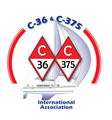According to the manufacture the coupling tube should be replaced every six years. Is anyone out there following their recommendation. Looking at the Compass marine blog, this could be a can of worms I'm opening by attempting to replace the hose. My interest was a result of finding sea water in the bilge. I recently found that leaving the transmission in reverse when not on the boat prevents the shaft and prop from rotating and bilge stays dry. I suspect the constant sea actions on the mooring is causing the prop to rotate. I've seen the seal leak when misaligned.
—
John & Kathy Impagliazzo
s/v Pooka
Jamestown, RI
1994 C36 TR #1339, M35AC

John,
I have also read the manufacturer's instructions to change out the accordion hose at the six year mark. When the hose reached the six year mark on my last boat, I contacted PYI, and told them that the hose looked to be in perfect condition, showed no signs of degradation, and still had plenty of "spring" left in it. The person I spoke with at PYI told me that the six year figure was a conservative number, and that often the hose will last much longer. In the absence of UV rays and/or ozone, you could expect 10+ years. I sold the boat with an 11 year old accordion hose, and it still looked like new.
As far as the PSS leaking while the boat is at a mooring, I have never heard of such a thing. If the PSS doesn't leak when motoring, and the shaft is spinning at 1000-1500 RPM, it seems hard to believe that it would leak at a few RPM. Just a thought.
Tom Sokoloski
C36/375IA Past Commodore
Noank, CT
John,
FWIW, my dripless shaft seal bellows is about 12 years old and looks to be in great shape. I plan to replace it when I haul the boat over the next few months.
Duane Ising - Past Commodore (2011-2012)
s/v Diva Di
1999 Catalina 36 Hull #1777
Std rig; wing keel, M35B, Delta (45#)
Punta Gorda, FL
http://www.sailblogs.com/member/diva-di/
I replaced mine a couple years ago, mainly because I read that it should be done every 6 years or so. It looked 100% fine and I could find no difference between it and the new one after I'd removed it. So it may well be that PSS is being conservative (smart) and/or that environmental factors can play a part in longevity.
Of more importance IMHO is whether or not your shaft seal has the vent hose or not. Mine did not and the year after I replaced the bellows, it started to make a lot of noise and get hot enough to burn my fingers ( I started a thread about the issue). PSS sold me the new part with the vent tube for a reasonable price and also advised me that they stopped selling the non-vented units some years ago, as some people, like myself, had issues with them going dry and over heating.
So if you plan to replace the belows and do not have the vented type, I'd recommend considering to replace both while you're at it.
Gary and Cathy Price
1997 C36 Mk II Tall Rig/Wing Keel Imagine...
Hull # 1617
Worton Creek, Md.
Northern Chesapeake Bay
Thanks for the recommendations. I don't have the vent hose and I haven't observed heating issues.
John & Kathy Impagliazzo
s/v Pooka
Jamestown, RI
1994 C36 TR #1339, M35AC
John,
That probably means you've been 'burping' it properly!
Tom Sokoloski
C36/375IA Past Commodore
Noank, CT
I also burped mine; in fact I started to burp it regularly. In a conversation with PSS support, it seems they found that certain sailboat owners had a problem with air bubbles under the hull finding their way into the prop shaft opening. After multiple occurrences of mine drying out, howling and getting hot enough to burn me, I began to make the association with a day of beating into a stiff breeze in a chop. I guess enough air bubbles were getting in there to cause the problem. PSS said they'd stopped making the non-vented units for just that reason, and always recommended the vented type for powerboats. I don't know why mine worked fine for a number of years before it started drying out, but maybe after it dried out the first time it damaged the mating surfaces enough that the lack of water would cause it to heat up more quickly?? Don't know. I do know that burping it after every hard sail kept it from occurring until the boat was hauled in the fall, and I installed the vented seal.
Gary and Cathy Price
1997 C36 Mk II Tall Rig/Wing Keel Imagine...
Hull # 1617
Worton Creek, Md.
Northern Chesapeake Bay